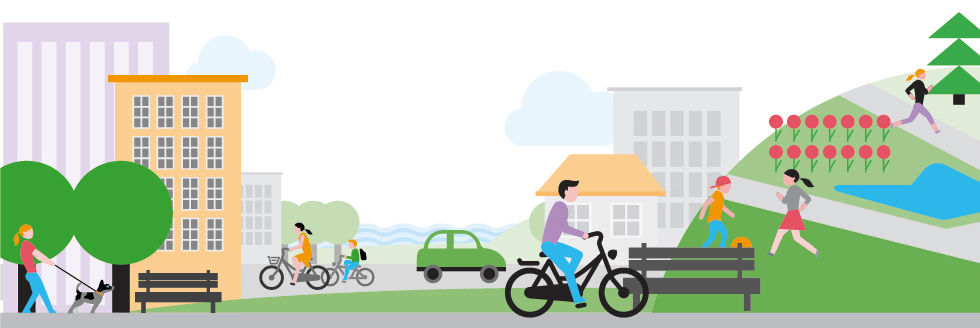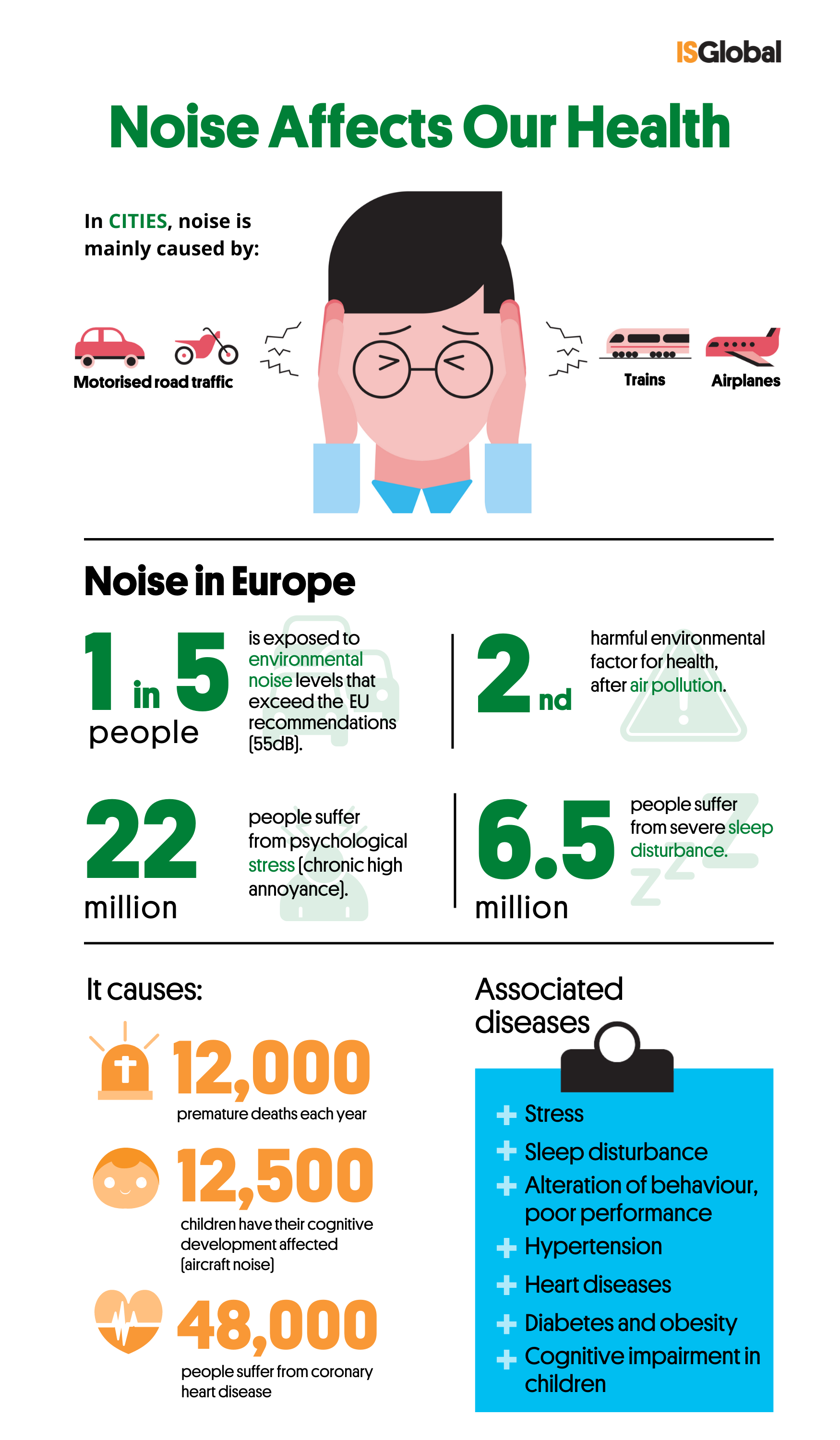
Featured Items

Stay informed on the COVID-19 scientific updates and other global health issues. Click here to sign up for email updates from ISGlobal.
#CitiesWeWant
Our health - and that of our planet - depends on how cities are designed. Urban life poses challenges that push us to rethink how we plan urban environments. The #CitiesWeWant are cities designed for people: places where we can live well and be healthy.
In this interactive report we detail the 5 key strategies to building healthy and sustainable cities.

Urban Planning, Environment and Health Initiative*
Last update: APRIL 2018
1. Air Pollution
It affects us throughout our whole life, from the time we are in the womb until our death. But, are we aware of what we are breathing?
98% of cities in low and middle income countries do not meet the air quality standards established by the World Health Organisation (WHO). In high income countries, this percentage decreases to 56%.
An overwhelming amount of scientific evidence underlines the urgent need to improve the quality of the air we breathe. The Air Pollution and Urban Environment Programme at ISGlobal has conducted numerous studies on the health impact of air pollution. Researcher David Rojas, who is part of our team, explains:
It is rarely visible, but air pollution – in particular traffic-related air pollution- is the cause of some of our most common diseases. Lung cancer, stroke, respiratory diseases and many more are caused by this invisible killer. Beyond pollution, the urban environment in which we live directly affects our health and well-being.
Air pollution affects children’s brains. ISGlobal studies conclude that daily exposure to nitrogen dioxide (NO2) and black carbon, two traffic related pollutants, affect cognitive development in children. This is explained by Jordi Sunyer, head of the Child Health Programme at ISGlobal:
In 30 years, 7 out of 10 people will live in urban environments, according to UN estimates. To face the challenges posed by this unprecedented urbanisation, we must act quickly and place our health and well-being at the centre of urban planning.
Improving the quality of air in cities must become a top priority for governments, city councils and urban planners.
2. Noise
Stay informed on the COVID-19 scientific updates and other global health issues. Click here to sign up for email updates from ISGlobal.
Traffic jams, road works, garbage trucks, neighbours’ domestic noises, terraces… Cities are synonymous with noise. Noise pollution is seen as a simple nuisance, and we do not link it directly to our health. However, noise impacts our health much that the World Health Organisation (WHO) puts traffic-related noise as the second most harmful environmental factor in Europe, right after air pollution.
Noise is defined as an “undesired sound,” and is one of the most important environmental threats to public health. Road traffic is the most common source of noise pollution within and outside cities, followed by trains and airplanes.

Noise accounts for 36% of the total disease burden resulting from poor urban planning. This figure is even higher than that attributed to air pollution. Maria Foraster, ISGlobal researcher specialised in noise and health, explains:
Urban planning can greatly contribute to decreasing noise pollution levels.
3. Natural Spaces
The city of the future needs to be a green city. Several scientific studies associate green spaces -urban parks, gardens, tree-lined streets or forests, among others- with numerous health benefits in adults, such as a reduction of stress, a longer life or a better general and mental health.
Studies in children have shown positive associations between green environments and better attention capacities, emotional and behavioural development, and even beneficial structural changes in the brain.
The impact of blue spaces – fountains, lakes, rivers or oceans – on our health is a relatively new field of research. Blue spaces are associated with higher levels of physical activity and could be beneficial to our mental health, particularly in terms of stress reduction and self-perceived well-being.
Although we don't know yet which characteristics of the natural areas are the most beneficial for people's health, what the mechanisms underpinning this association are, or which natural spaces have the greatest positive impact on health, evidence suggests that when it comes to our health green and blue are good.
Nature must be part of the city. Beyond isolated parks and spots, natural spaces must form a pattern that connects urban spaces and benefits all citizens.
4. Physical Activity
Physical inactivity is a global public health problem: it is the fourth risk factor for death worldwide and it causes one in four cases of breast and colon cancers.
Do you practise enough physical activity? We challenge you to answer the following question:
Cities must be designed to promote physical activity through active transport, that is, urban planning should facilitate walking or cycling.
Half of car trips within cities cover journeys of less than 5 km. This distance can be covered by active transport, with a great impact on public health: it increases physical activity and reduces air pollution and noise levels.
Increasing the level of physical activity is not only an individual need, but also a social one, and it must be integrated into the design of our cities.
5. Temperature
Did you know that in cities temperatures tend to be higher than in surrounding areas? In fact, the temperature at night can reach up to 10 degrees higher in urban environments compared to surrounding areas. This effect is known as "urban heat island".
The geometric shape of cities, with large buildings and paved surfaces that absorb heat,, or the lack of green spaces are some causes of heat islands. ISGlobal researcher Èrica Martínez explains:
Heat islands and high temperatures increase mortality, especially from cardiovascular and respiratory diseases. Urban planning needs to incorporate the prevention of temperature increases in cities as a design priority.
6. Conclusions
Throughout this digital report, we have seen that the scientific evidence is clear: today’s urban life can have serious negative impacts on our health. The simple fact of living in a city not necessitate these risks to our health, particularly since they are perfectly avoidable.
Mark Nieuwenhuijsen, director of the Urban Planning, Environment and Health Initiative at ISGlobal, describes the need to take the steps from scientific evidence to political decision making:
The #CitiesWeWant are cities designed for people: spaces with good air quality, low noise levels and no heat islands. They provide urban environments with more green spaces and healthy levels of physical activity. There are many available measures to make them a reality:
ISGlobal's Urban Planning, Environment and Health Initiative works closely with public and private actors to incorporate scientific evidence into urban planning. There is no time to lose. Given the number of people affected and the severity of the potential consequences, urban health should be considered an emergency.



